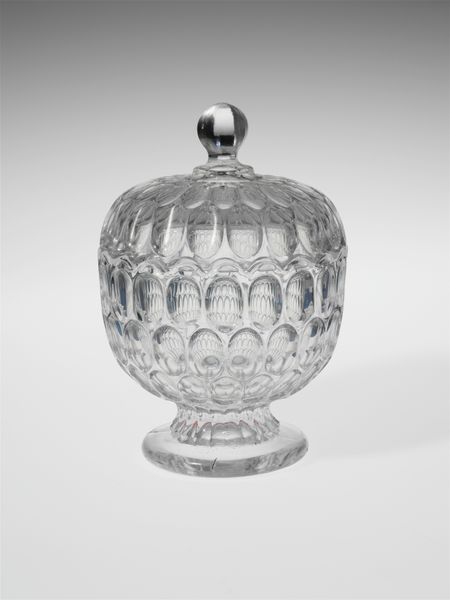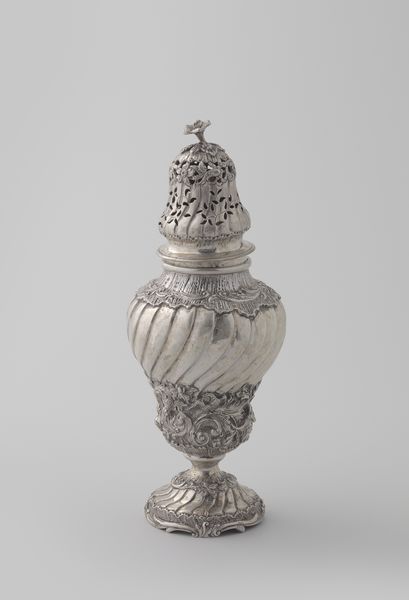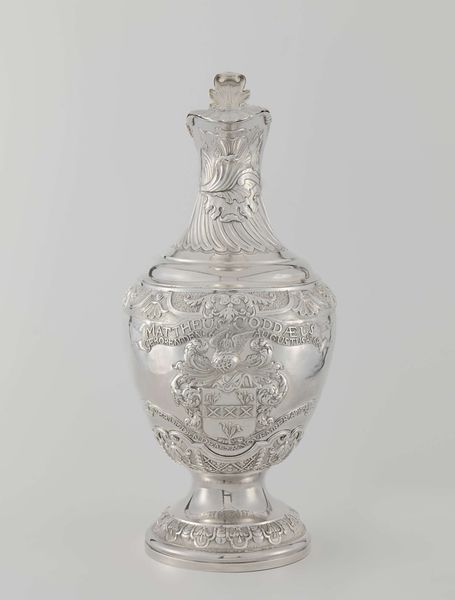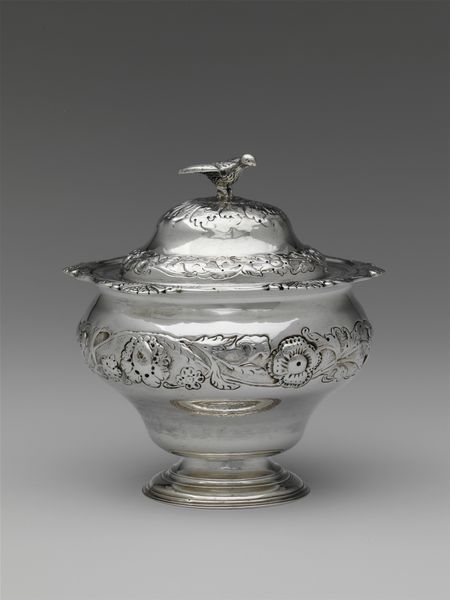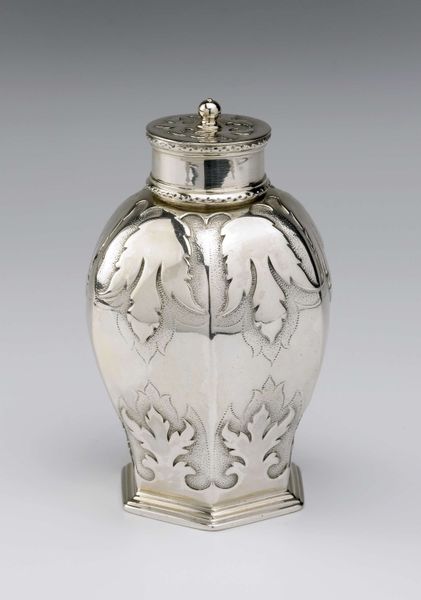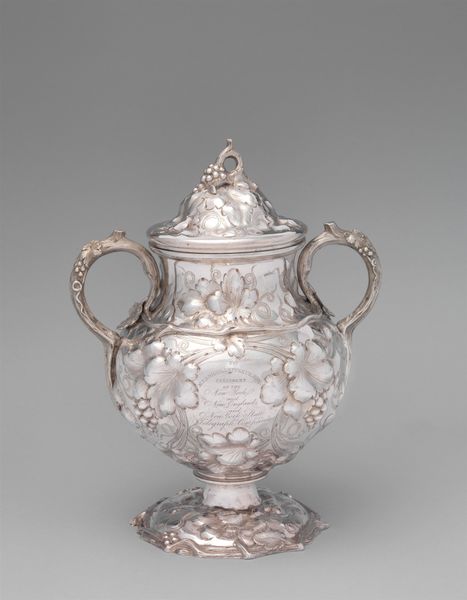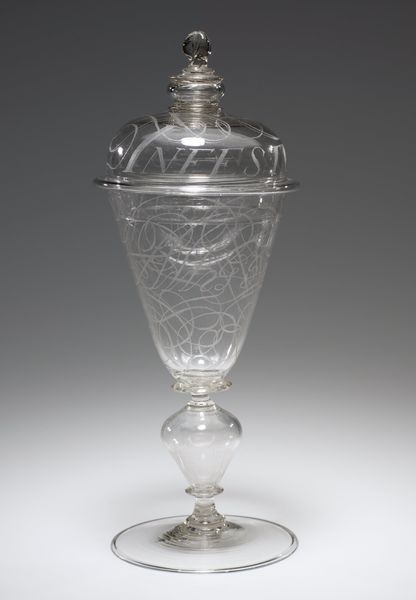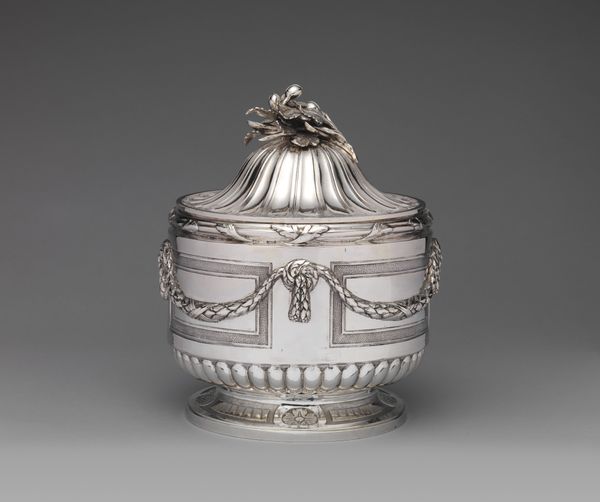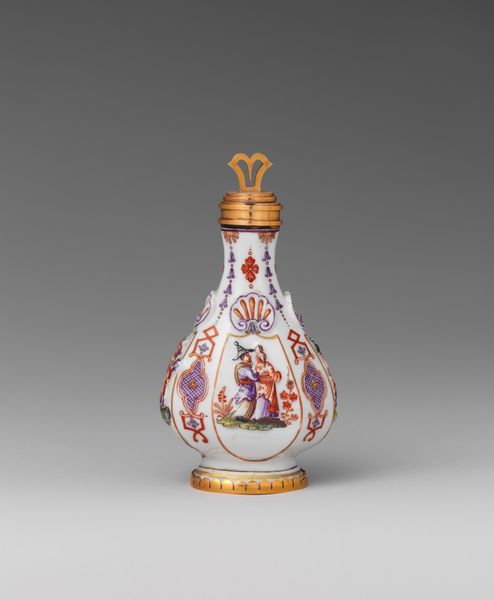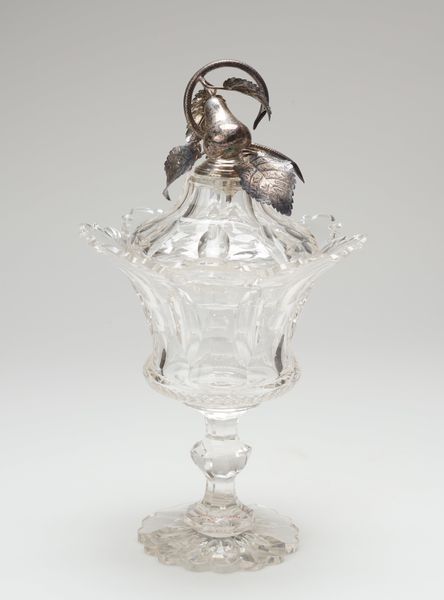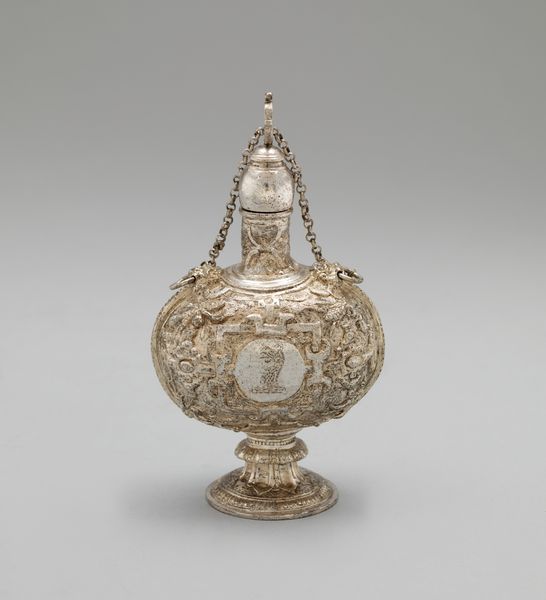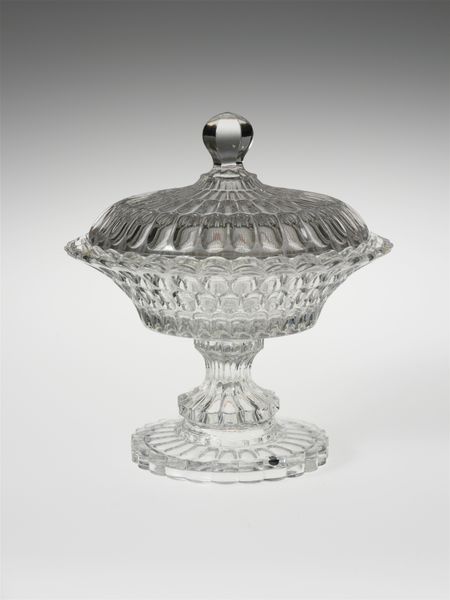
silver, metal
#
silver
#
baroque
#
metal
#
decorative-art
Dimensions: weight 94.42 gr, height 12.2 cm, diameter 7.0 cm
Copyright: Rijks Museum: Open Domain
Editor: Standing here before "Theebus," crafted in 1731 by Jacob Groeneweg, I’m struck by its material presence. The silver seems to almost glow under the gallery lights, and the vessel, though relatively small, has a strong vertical emphasis. The way the body is divided into sections of vertical ribs and organic forms is quite compelling. What do you see when you look at this piece? Curator: Primarily, I observe the interplay of form and texture. Consider the articulation of the vessel's surface. Note how the artist contrasts the smooth, reflective planes with areas of intricate, almost floral chasing. The eye is invited to move from the base, where heavier ornamentation provides visual grounding, upwards along the fluted midsection, finally resting upon the detailed, repeating patterns on the rounded shoulder. The lid mirrors the decoration and caps off the structure. Do you see how these elements create a balanced, yet dynamic composition? Editor: I do. The repetition, now that you point it out, is critical, but so is the tension between geometric and organic shapes. Is there anything about its construction that stands out to you? Curator: Indeed. Observe the technique employed. The raising and chasing of the silver, particularly in achieving the crisp definition of the fluting and the intricate detail of the foliage, demonstrates a mastery of the silversmithing craft. The way that the reflections dance on its surface animate its stillness. How does that relate to the concept of 'function' as decorative art, do you think? Editor: That’s a great question. I guess the form truly dictates the experience of interacting with this artwork! Curator: Precisely.
Comments
No comments
Be the first to comment and join the conversation on the ultimate creative platform.
